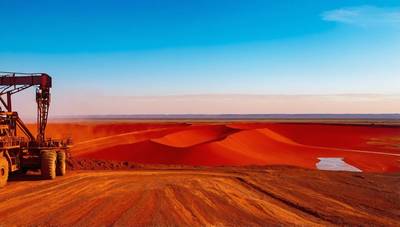BHP: Australian green iron is too expensive despite joint China agreement
BHP, a major miner, said that it would be too expensive for Australia to develop a "green-iron" industry. This is despite the fact that Australia and China had agreed to work together this week to decarbonise steel supply chains, which are responsible for almost a tenth percent of global emissions.
BHP Australia's Geraldine Slattery said the costs of producing low-carbon steel products "just don't stack up" when she attended a session in China on green steel this week with Prime Minister Anthony Albanese and Australian miners, as well as Chinese steelmakers.
Slattery stated in a LinkedIn posting late on Tuesday that "even with generous policy assistance, the cost (of production) in Australia would be twice as much as the Middle East or China - customers thousands of kilometers away."
Slattery, along with leaders of other major iron ore mining companies, such as Fortescue Metals Group and the Australian Prime Minister Anthony Albanese, visited China this week. Albanese said that Australia and China should work more closely together on decarbonisation.
Australia's ambitious plans are shattered by the lack of enthusiasm shown by the world's largest miner. It said that its strategy is "not to produce iron ore and steel ourselves".
Andrew Forrest, founder of Fortescue, asked Slattery why she attended the meeting on Wednesday, in Beijing, when considering her views on green iron.
He said, "All I can tell you is that my customer wants green ore." The Pilbara, Australia's largest iron ore mining region, is able to produce green ore. It must do so to maintain the value of this product to Chinese consumers.
Diversification efforts
The iron ore that Australia provides to China is of a low quality and cannot be processed directly into steel using renewable energy.
Green iron is a product that is made with low-carbon hydrogen, either from renewable energy sources or biomass, instead of coal. These processes will not be commercialized until the next decade.
High power costs and high labour costs have slowed down Australia's efforts to develop a mineral processing industry. Raw material exports bring in about A$370 billion (US$242 billion) per year.
In February, the government allocated A$1 Billion to support the manufacturing of green iron as well as its supply chain.
BHP, Rio Tinto, and Bluescope Steel have agreed to develop a pilot plant that will produce low-carbon steel using direct reduced iron and renewable energy in an electric furnace. The project is expected to start in 2028.
Fortescue is also working on a green-iron project and will produce green-iron from a small pilot plant in this year.
(source: Reuters)

